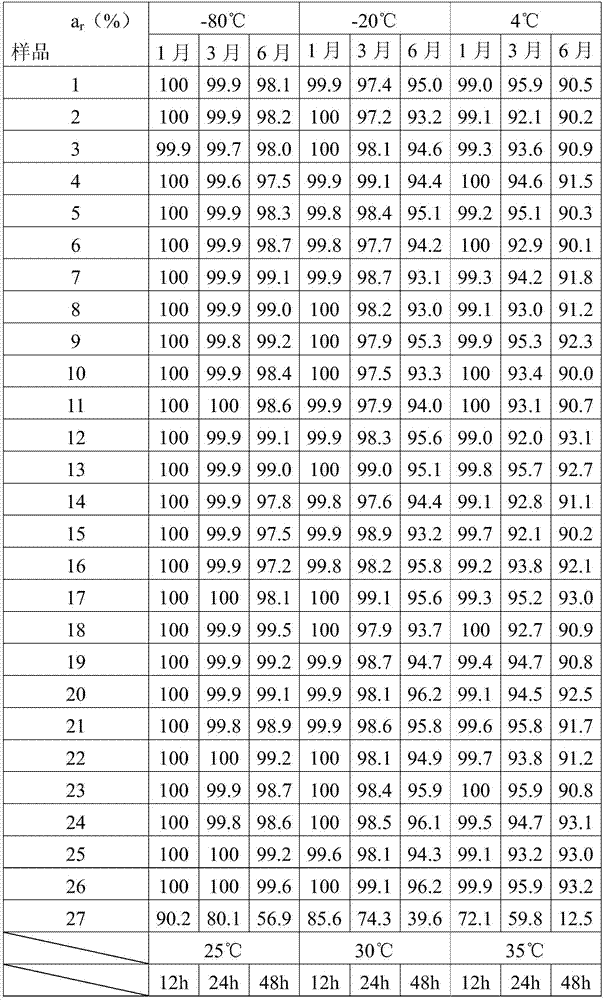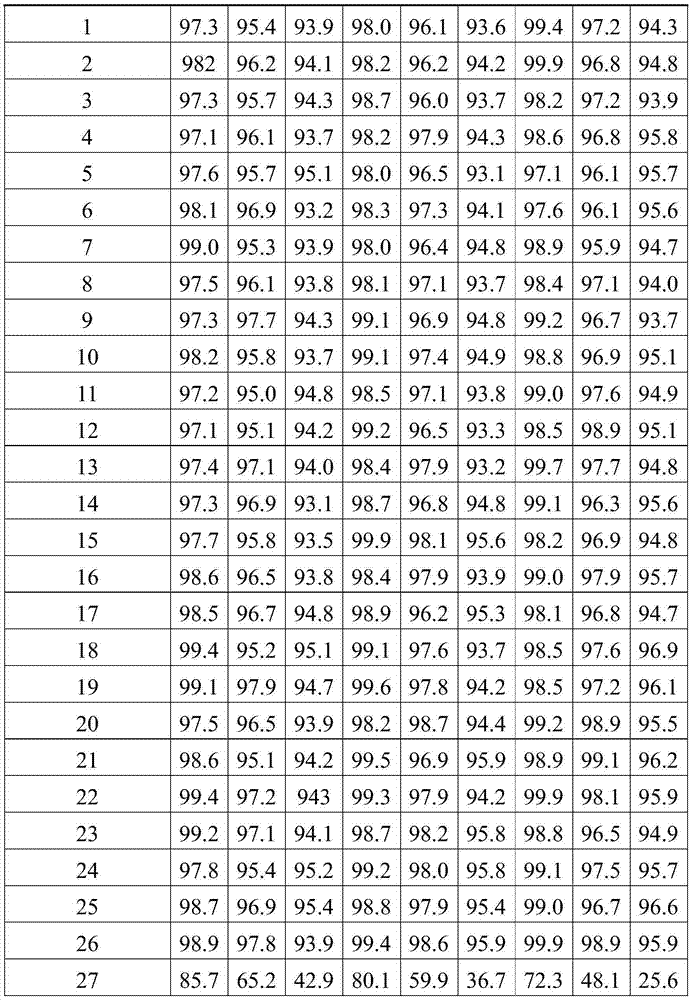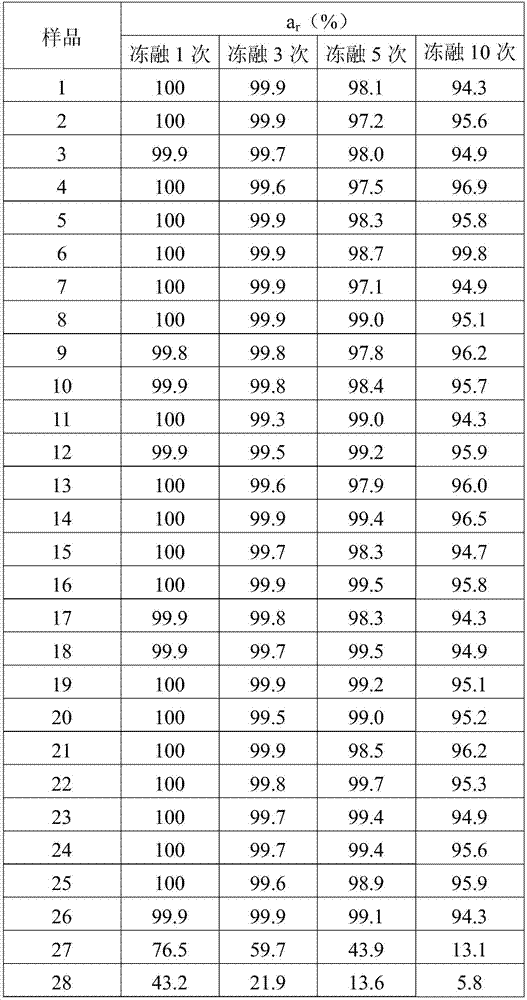Storage reagent for biotinylated ATPS (adenosine triphosphate sulfurylase)
A biotinylation and reagent technology, applied in the biological field, can solve the problems of easy inactivation, ineffective protection of biotinylated ATPS enzyme activity, storage reagents without biotinylated ATPS, etc., so as to reduce the impact and prolong the storage time. Effect
- Summary
- Abstract
- Description
- Claims
- Application Information
AI Technical Summary
Problems solved by technology
Method used
Image
Examples
Embodiment 1
[0024] Embodiment 1 A kind of storage reagent of biotinylated ATPS
[0025] Including the following components: Tris-HCl25mMpH7.0, sodium chloride10mM, EDTA0.02mM and DTT0.02mM, the solvent is deionized water.
Embodiment 2
[0026] Embodiment 2 A kind of storage reagent of biotinylated ATPS
[0027] Including the following components: Tris-HCl30mMpH7.2, sodium chloride15mM, EDTA0.03mM and DTT0.03mM, the solvent is deionized water.
Embodiment 3
[0028] Embodiment 3 A kind of storage reagent of biotinylated ATPS
[0029] Including the following components: Tris-HCl35mMpH7.4, sodium chloride20mM, EDTA0.04mM and DTT0.04mM, the solvent is deionized water.
PUM
 Login to View More
Login to View More Abstract
Description
Claims
Application Information
 Login to View More
Login to View More - R&D
- Intellectual Property
- Life Sciences
- Materials
- Tech Scout
- Unparalleled Data Quality
- Higher Quality Content
- 60% Fewer Hallucinations
Browse by: Latest US Patents, China's latest patents, Technical Efficacy Thesaurus, Application Domain, Technology Topic, Popular Technical Reports.
© 2025 PatSnap. All rights reserved.Legal|Privacy policy|Modern Slavery Act Transparency Statement|Sitemap|About US| Contact US: help@patsnap.com



